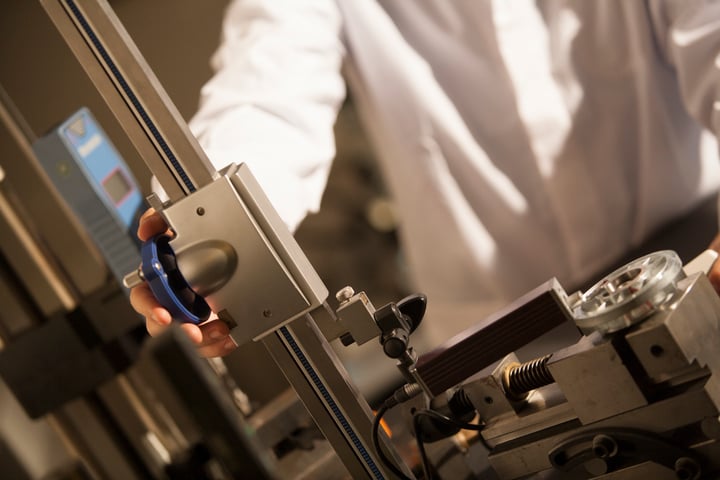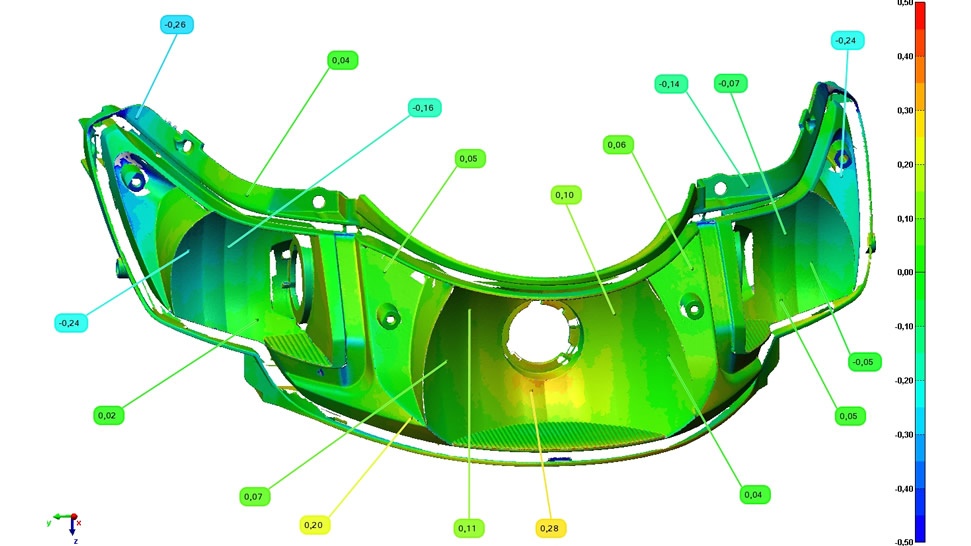As winner of numerous international awards, Bruschi Spa is known for its innovative approach in design and technology. We are glad to share our insights and experiences with the industry members.
Quality control in zinc die casting

In this post we analyze the activities of quality control in the production of zinc alloy die casts: a series of fundamental operations that accompany every phase of a project.
In detail, after defining what quality control is, we will examine in depth the work of the department in the different productive phases and we will then explore the activities that accompany mass production. Finally, we will focus on the analysis of the advantages that a correct implementation of quality control can produce.
Definition of quality control
In a manufacturing company quality control consists of the set of activities carried out to verify compliance with the requirements of the customer in the creation of a product. The team that undertakes all the necessary operations in order to verify the quality of the production is the quality control department. Quality control in this article refers both to the activities and the team.
To deepen your knowledge on quality control and on the activities of the department we suggest you to visit Qualitiamo, a website completely dedicated to quality topics and related certification.
In zinc alloys die casting due to the evolution of market and products it has been necessary to create a specialized team dedicated exclusively to quality control. In fact, the compliance with the dimensions and the parameters requested by the customer can exclusively be guaranteed by the work of specialized personnel that, beyond production times, carries out all the necessary controls.
After these necessary premises let’s now analyze the phases of production of a die cast by examining the activities undertaken by the quality control department.
Stages of quality control
As already said, quality control accompanies the product in every stage of its production. It is necessary for the quality control department to supervise design, samples and mass production up to the arrival of the components to external suppliers and the final customer. Let’s explore now the activities of this important department in every stage of the life cycle of a project.
Design
Every activity that the quality control department undertakes during production gets started in this stage. During design phase, in fact, the team responsible for quality intervenes together with the other departments in order to evaluate the feasibility of the product. In this phase the requirements of the customer are analyzed with reference to the documentation required in phase of product qualification: FMEA, control plans, analysis of reproducibility of the measurements, gage R&R are evaluated in order to find critical issues and gaps with reference to the requirements of the customer. Moreover it is in this phase that the control sheet, which is the instrument that the quality department uses during production phase, is drawn up.
Sampling
In sampling phase all the control activities required by the customer are carried out on the first off tool products. These activities include dimensional, functional and aesthetical (if required) controls. Once all the necessary information has been acquired, it is possible to complete all the documentation in order to obtain the approval of the customer. Hence, samples are shipped to the customer for an accurate evaluation. Upon receipt of approval it is possible to begin mass production.
Quality control on the samples is fundamental, both internally and on the customer side, because it is in this stage that approved products, which are examples for the standard process that is to be repeated during mass production, are created.
Production
During production all the quality controls planned in the control sheets are carried out. It is in this stage that controllers and quality team intervene.
A simple control carried out by the operator, on the components in production or on the completed pallets, is not always enough to guarantee the respect of the qualitative requirements demanded by the customer.The quality control team, after having actively participated in design and sampling phases, comes into play also when production starts. In fact the first components are taken, measured and tested. Afterwards the operator checks every packaging unit, but the team intervenes periodically, on the basis of a frequency agreed with the customer or established internally, to take some samples and perform the tests provided in the control sheet.
The aim of periodical controls is not only the verification of the compliance with the requirements of the customer and the lack of non-compliance but also the monitoring of production trend. Entering the collected data in a database allow the creation of a register of the production history: a wealth of important data that allows the potential non-compliances to be forecasted in advance and that makes it possible to know the strategies that have already been implemented to find a solution.
In this phase the team bases its activities on the control sheet that has been created during the kick off stage and that contains all the requirements included in the PPAP. A photograph of the product, with evidence of the critical areas, of the kind of control that is to be carried out and of the tools that are to be employed, is shown on the control sheet. It is the data contained in the control sheet that allows the update of the database and the creation of the potential non-compliances history.

After depicting the stages in which the quality control department intervenes and the procedures implemented in order to guarantee the compliance of the components with the customer requirements, let’s analyze the advantages of this system.
Stages after production
The activities of the quality control department do not end with mass production: in fact external suppliers can take part in the process and, in this case, it is necessary to schedule specific controls not only on the incoming and outgoing material, but also on the productive process of the suppliers themselves. In fact in order to guarantee the compliance with the requirements of the customer it is necessary to verify, monitor and guarantee the repeatability of the quality of the products and of the processes of the supplier. Naturally control is carried out on the totality of the products manufactured by the supply chain but, as previously said, it is the whole quality system that has to be checked and approved periodically according to strict internal or external standards.
Eventually the quality control department of the zinc alloy die caster is in constant contact and communication with the quality control department of the customer. In fact the two departments share information in regards to the quality of the supplies and to the activities that are necessary in order to maintain the expected standards unchanged.
Advantages
A first evident advantage is the reduction of non-compliances. However it is important to underline how this result is obtained not only thanks to accurate controls undertaken by specialized personnel, but also thanks to the work that accompanies every stage of a project.
In design stage it is the combination of different expertise that allows the creation of accurate control sheets that imply study and forecast of processes and the construction of realistic scenarios of production. Moreover an effective design of control sheets allows the controls undertaken during mass production to be truly effective and makes it possible, through the data inserted in the database, to forecast the occurrence of non-compliances and to implement containment strategies based on data and experience.
The cross functional change of information occurs not only during design, but also during mass production and at its conclusion, during daily meetings in which the different departments meet. In fact thanks to the reports of the quality control department the products stopped for non-compliance, before the disposal, are investigated by design, foundry and quality department.
During these meetings non-compliances are analyzed and an analysis of causes, factors of risk, preventive actions and containment strategies is undertaken.
Thus, the quality control department is cardinal in these meetings and it drives the different departments in direction of continuous improvement and zero waste, a goal that is obtainable only with preventive, and not reactive, actions.
In conclusion, the creation and the management of the database, with constantly updated control sheets, makes it possible to operate with awareness and to carry on considerations on the causes of non-compliances and on the effectiveness of the strategies adopted over time. In fact the knowledge of the past is the best strategy to forecast and improve the future.
Conclusions
With this post on the activities and the advantages of quality control we hope we managed to demonstrate how an effective method for the diminution of non-compliances is based not only on controls but also and especially on processes that involve different expertise and functions related to different areas. In fact it is only through the sharing of knowledge and the exchange of views among different departments that, thanks to the specific contribution of everyone, it is possible to reach competitive results.

